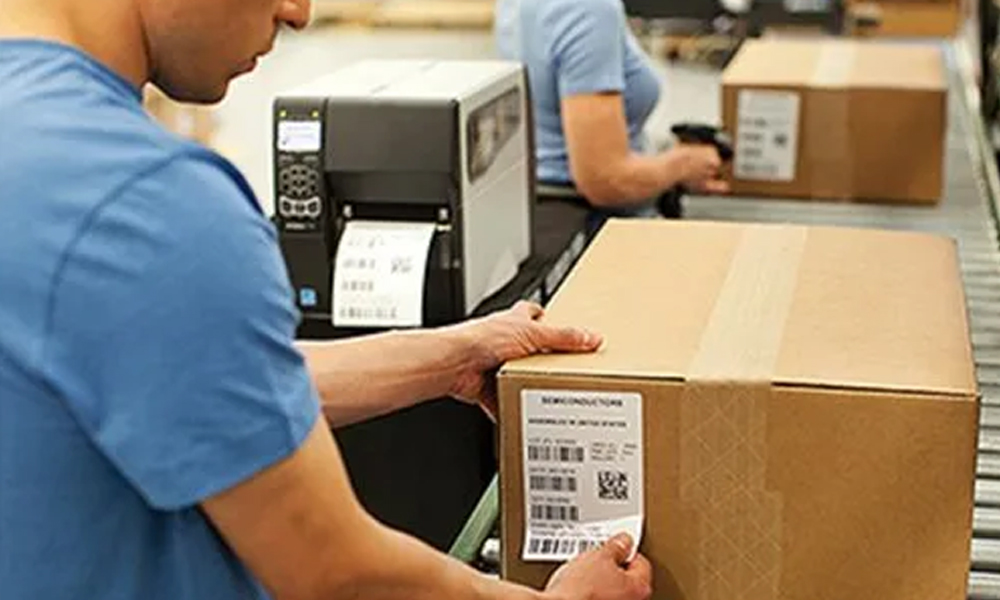
The Evolution Of Barcode Label Solutions: From Analog To Digital
In the ever-evolving landscape of technology, few innovations have had the profound impact and longevity of the humble barcode. What began as a simple means of tracking products in grocery stores has burgeoned into an omnipresent tool across industries, revolutionizing inventory management, supply chain logistics, and retail operations. This evolution, from analog to digital, has been driven by advancements in barcode label solutions, printers, labels, and scanners, each playing a pivotal role in enhancing efficiency, accuracy, and productivity. Let's delve into the journey of barcode technology and explore how it has transformed over the years.
Analog Era: The Birth Of Barcode Labels
In the analog era, barcode labels were primarily linear, consisting of parallel lines of varying thickness. These lines represented encoded data, typically numerical digits, which could be scanned and interpreted by barcode readers. The Universal Product Code (UPC) system, introduced in the 1970s, standardized barcode symbologies for retail products, facilitating automated checkout and inventory management.
Early barcode labels faced challenges such as limited data storage capacity and susceptibility to damage or degradation. However, they marked a significant leap forward in efficiency compared to manual data entry methods, reducing errors and speeding up transactions.
Digital Evolution: The Rise Of Barcode Printers
Digital technology revolutionized barcode printing, enabling the rapid creation of high-quality labels with enhanced durability and readability. Thermal printing emerged as a dominant technology, offering advantages such as fast printing speeds, low maintenance requirements, and compatibility with various label materials.
Thermal transfer printers utilize heat to transfer ink onto labels, resulting in crisp, long-lasting prints suitable for applications requiring durability and resistance to environmental factors. Direct thermal printers, on the other hand, rely on heat-sensitive paper to produce labels, making them ideal for short-term applications such as shipping labels and receipts.
Barcode printers evolved to accommodate diverse printing requirements, including on-demand printing, batch processing, and integration with enterprise resource planning (ERP) systems. Furthermore, advancements in printer connectivity enabled seamless integration with networked environments, enabling centralized control and monitoring of printing operations.
The Role Of Barcode Labels: Beyond Identification
Barcode labels transitioned from simple identifiers to multifunctional data carriers, capable of storing vast amounts of information in compact formats. Two-dimensional (2D) barcodes, such as QR codes and Data Matrix codes, revolutionized data encoding by enabling the storage of alphanumeric characters, URLs, and other data types within a single code.
This expanded data capacity facilitated the integration of additional information beyond basic product identification, including product specifications, serial numbers, manufacturing dates, and batch information. As a result, barcode labels became invaluable tools for inventory management, traceability, and regulatory compliance across industries such as healthcare, manufacturing, and logistics.
Advancements In Barcode Scanners: Enhancing Productivity And Mobility
Barcode scanners evolved to meet the growing demand for efficiency, accuracy, and mobility in data capture applications. Traditional laser scanners gave way to imaging scanners equipped with advanced image processing algorithms, capable of decoding complex 1D and 2D symbologies with unparalleled speed and accuracy.
Wireless and mobile scanning solutions revolutionized workflows by enabling real-time data capture and transmission, eliminating the need for tethered connections and stationary scanning stations. Bluetooth-enabled scanners, handheld devices, and mobile applications empowered workers to perform inventory tasks, asset tracking, and point-of-sale transactions on the go, improving operational efficiency and customer satisfaction.
Furthermore, integration with enterprise systems and cloud-based platforms facilitated seamless data synchronization and analytics, enabling organizations to gain actionable insights from barcode data and optimize their operations.
Conclusion: Embracing Innovation For The Future
The evolution of barcode technology from analog to digital represents a remarkable journey of innovation and adaptation. Barcode label solutions, printers, and scanners have evolved in tandem, driven by the need for efficiency, accuracy, and versatility in a rapidly changing business landscape.
As we look to the future, the potential for further advancements in barcode technology is boundless. Emerging trends such as Internet of Things (IoT) integration, artificial intelligence (AI)-powered image recognition, and blockchain-based traceability solutions promise to revolutionize supply chain management, consumer engagement, and beyond.
In conclusion, the evolution of barcode technology underscores the transformative power of innovation in shaping the way we do business and interact with the world around us. By embracing digital solutions and leveraging the full potential of barcode technology, organizations can streamline their operations, drive efficiency, and unlock new opportunities for growth and success in the digital age.
